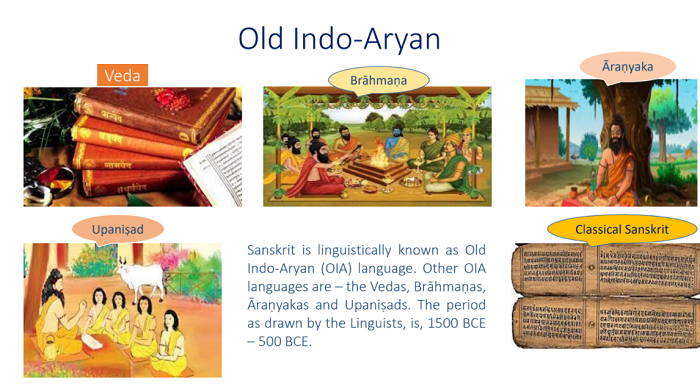STORY CREDITS
Writer/Editor: Shivangi Vasudev Bhatt
Photo: Media and Communication, IIT Gandhinagar
As a part of the lecture series under the Indian Knowledge Systems (IKS) elective course, IITGN hosted two lectures titled ‘Jain Canonical Literature’ and ‘Prakrit Dramatic Literature’. Distinguished scholar of Sanskrit, Prakrit, and Pali, Prof J R Bhattacharya delivered these talks on February 17 and 18, 2022.
At the beginning of his first lecture, Prof J R Bhattacharya highlighted different stages of the Indo-Aryan languages and said, “Sanskrit is the Old Indo-Aryan language, and Prakrit is the Middle Indo-Aryan language, along with inscriptional Prakrit, Pali, and Apabhramsha. The New Indo-Aryan languages include Assamese, Bengali, Hindi, Gujarati, etc. Sanskrit and Prakrit have existed parallelly through the ages. About two-thirds of the Jain texts were written in Prakrit. Sage Bharata in Natyashastra mentioned seven types of Prakrit, namely Magadhi, Avanti, Prachya, Shauraseni, Ardhamagadhi, Vahliki, and Dakshinatya.”
Prof Bhattacharya elaborated that Jain canonical literature primarily comprises the religious sermons attributed to Lord Mahavira (600 BCE), composed in Ardhamagadhi Prakrit by the Ganadharas (chief disciples of Mahavira). These sermons are the source of the Jains’ philosophy and religion. Acharangasutra is said to be the earliest canon holding the archaic form of the Ardhamagadhi. As the canons were verbal for a long time, their written composition later consisted of variations. In the words of Prof Bhattacharya, “It is believed that the four canons, Acharangasutra, Sutrakritangasutra, Uttaradhyayana, and Dasaveyaliya, deal with the ethical doctrines of the ascetics and the laities on one hand and other aspects of philosophy, sociological and cultural studies on the other.”
The second talk by Prof Bhattacharya threw light on the Prakrit dramatic literature. The dramas that fulfill the theories of dramaturgy can be found in the Sanskrit works of Ashvaghosha and Bhasa, containing the older form of Prakrit prevalent in the pre-Christian era. Sage Bharata, the earliest dramaturgist to prescribe the rules of drama, prescribed Sanskrit to characters such as gods, sages, brahmins, kings, and Prakrit to women, servants, and the ‘lower’ classes; the characters close to the king (like the queen and the jester) should converse in Shauraseni (a form of Prakrit). Rhetoricians of later periods prescribed different types of drama called rupakas. There are ten major rupakas and several uparupakas (minor rupakas). In Sattaka, a minor rupaka, all characters are prescribed Prakrit as their medium of speech. He also read out and explained excerpts from several Prakrit texts. The talks concluded with lively Q&A sessions.
With a research interest in Jainism and Buddhism, Prof J R Bhattacharya is currently associated with the Department of Sanskrit, Pali, and Prakrit at Visva-Bharati University, Santiniketan, West Bengal. He taught for more than 25 years at Jain Vishva Bharati Institute, Ladnun (Rajasthan). Prof Bhattacharya has published several articles and books in historical linguistics, Jain canons, and Jainism, including the translation of Dashavaikalikasutra, Hemachandra’s Prakrit Grammar, and publication of the manuscript of Prashnavyakaranasutra. He is an associate member of the Centre of Jain Studies, School of Oriental and African Studies (University of London, UK), and a member of the Board of Development of Prakrit Language, Ministry of Human Resource Development, Government of India.
The many varieties of Prakrit and their sub-dialects used in the dramas of the ancient period depict the beautiful cultural status of the society of those times.
Prof J R BhattacharyaThis is the sixth edition of the Introduction to Indian Knowledge Systems elective course, IKS 2022, being held online on the theme ‘Precolonial India’s Treasure House of Literatures’. The course is open to students and anyone interested in India’s knowledge systems and cultural heritage. They can join the course for free by registering online at: http://iks.iitgn.ac.in/. All lectures will be live-streamed on IITGN’s YouTube channel. The course’s website will carry regular announcements and updates on the speakers and lectures.
This news has been covered by some of the leading Indian newspapers and media agencies. Click on the links below to read more.

